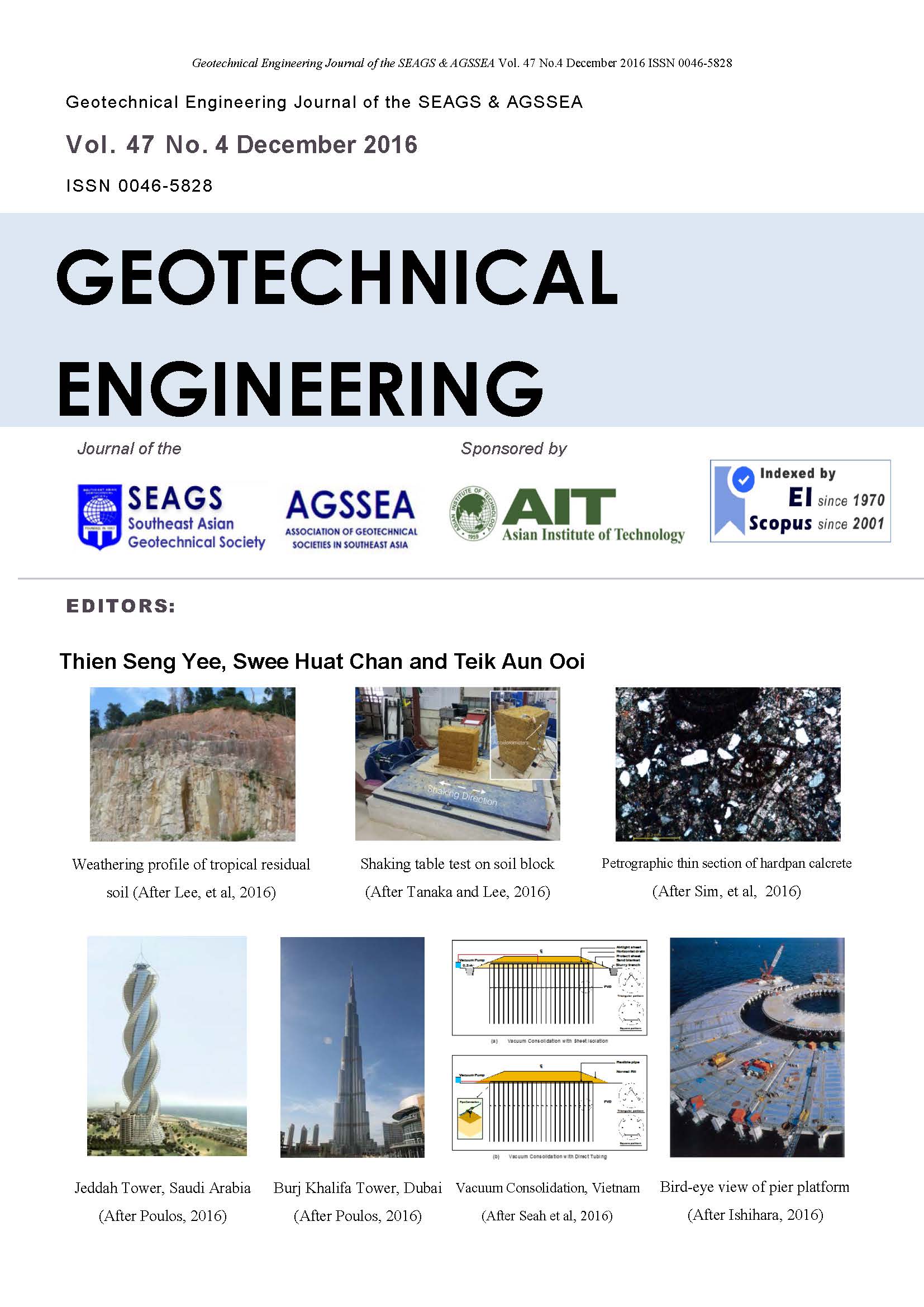Tunnelling Past Critical Structures in Kuala Lumpur: Insights from Finite Element Analysis and T-Z Load Transfer Analyses
Main Article Content
Abstract
The contribution of this paper is the discussion of three case histories of tunnelling past critical structures. The first case history is on a 15-storey tower building seated on a raft foundation. The analyses provide insight with regard to the need to adapt the TBM operating performance, as the presence of the building is found to be capable of inducing larger volume loss. The second case history is on a flyover bridge, of which the pile toes are at an elevation higher than the tunnel crown. In the third case history, the piles of a Light Rail Transit (LRT) bridge were in the way of the tunnel. The piles had to be removed and underpinned with new piles which terminate below the tunnel invert. For these two case histories, we demonstrate the use of the load transfer t-z and Q-z method (Seed & Reese, 1967), which can be implemented easily into a spreadsheet, to estimate the pile settlements induced by tunnelling. The load transfers on the piles were found to be affected by (i) the soil settlement trend, which could be either increasing or decreasing with depth, and (ii) the shaft and end-bearing stiffness. The potential influences of (i) a soft base for bored piles and (ii) pile groups are discussed. Finally, insights obtained from the t-z and Q-z analyses are used to derive the influence zones due to tunnelling, and they show similar trends to the influence zones previously proposed by Jacobsz et al. (2004) derived from centrifuge tests. The line joining the points of inflection of multiple subsurface Gaussian settlement profiles (Mair et al., 1993) at different depths was found to define the boundary at which the trend of soil settlement changes from increasing with depth to decreasing with depth.
Article Details

This work is licensed under a Creative Commons Attribution-NonCommercial-NoDerivatives 4.0 International License.
Copyright © 2019 Association of Geotechnical Societies in Southeast Asia (AGSSEA) - Southeast Asian Geotechnical Society (SEAGS).


